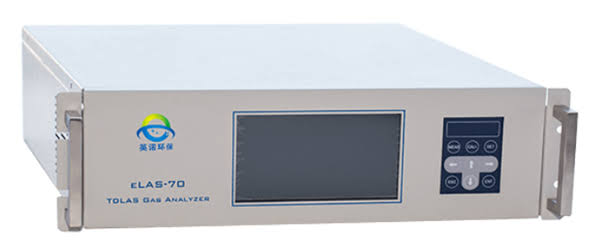HCL TDLAS (Hydrogen Chloride Tunable Diode Laser Absorption Spectroscopy) gas analyzers have transitioned from laboratory instruments to field-deployable devices, revolutionizing gas analysis across various industries. In this article, we will explore the diverse applications of HCL TDLAS gas analyzers, highlighting their significance in environmental monitoring, industrial processes, and healthcare diagnostics.
Understanding HCL TDLAS Technology
HCL TDLAS gas analyzers utilize laser absorption spectroscopy to measure the concentration of hydrogen chloride (HCl) gas in a sample. These analyzers emit laser light at a specific wavelength corresponding to the absorption line of HCl molecules. As the laser light passes through the gas sample containing HCl, the molecules absorb energy at the resonant wavelength, leading to a reduction in the transmitted light intensity. By analyzing the extent of this absorption, HCL TDLAS analyzers can accurately quantify the concentration of hydrogen chloride in the sample.
HCL TDLAS gas analyzers offer several advantages over traditional gas analysis methods:
- High Sensitivity: HCL TDLAS analyzers can detect trace levels of hydrogen chloride gas with exceptional sensitivity, enabling precise measurements even at low concentrations.
- Selectivity: The specificity of HCL TDLAS analyzers ensures minimal interference from other gases, resulting in accurate and reliable measurements of hydrogen chloride concentrations.
- Real-time Monitoring: With rapid response times and continuous monitoring capabilities, HCL TDLAS analyzers provide real-time insights into hydrogen chloride gas concentrations, facilitating prompt action in case of deviations from acceptable levels.
- Field Deployability: Unlike traditional laboratory instruments, modern HCL TDLAS gas analyzers are designed for field deployment, allowing for on-site gas analysis in various industrial and environmental settings.
Applications of HCL TDLAS Gas Analyzers
HCL TDLAS gas analyzers find extensive applications across different industries:
Environmental Monitoring
In environmental monitoring applications, HCL TDLAS analyzers are used to measure hydrogen chloride emissions from industrial sources, combustion processes, and chemical reactions. These analyzers help assess air quality, track pollutant sources, and ensure compliance with environmental regulations.
Industrial Processes
HCL TDLAS gas analyzers play a crucial role in industrial processes, such as chemical manufacturing, semiconductor fabrication, and wastewater treatment. They are utilized to monitor hydrogen chloride levels, detect leaks, and optimize process efficiency, thereby ensuring workplace safety and regulatory compliance.
Healthcare Diagnostics
In the healthcare sector, HCL TDLAS analyzers are employed for medical diagnostics and research purposes. These analyzers enable accurate measurement of hydrogen chloride levels in breath samples, blood, and biological fluids, facilitating the early detection and monitoring of respiratory diseases and metabolic disorders.
Field Deployment Challenges and Solutions
While field deployment of HCL TDLAS gas analyzers offers numerous benefits, it also presents challenges such as environmental conditions, power supply, and data communication. However, advancements in instrument design, ruggedization, and connectivity have addressed these challenges, making field deployment more feasible and reliable.
Conclusion
HCL TDLAS gas analyzers have evolved from laboratory instruments to versatile tools capable of on-site gas analysis across various industries. With their high sensitivity, selectivity, and real-time monitoring capabilities, HCL TDLAS analyzers play a vital role in environmental monitoring, industrial processes, and healthcare diagnostics. As we continue to advance in gas analysis technology, the applications of HCL TDLAS analyzers are expected to expand further, contributing to improved safety, efficiency, and environmental sustainability.
